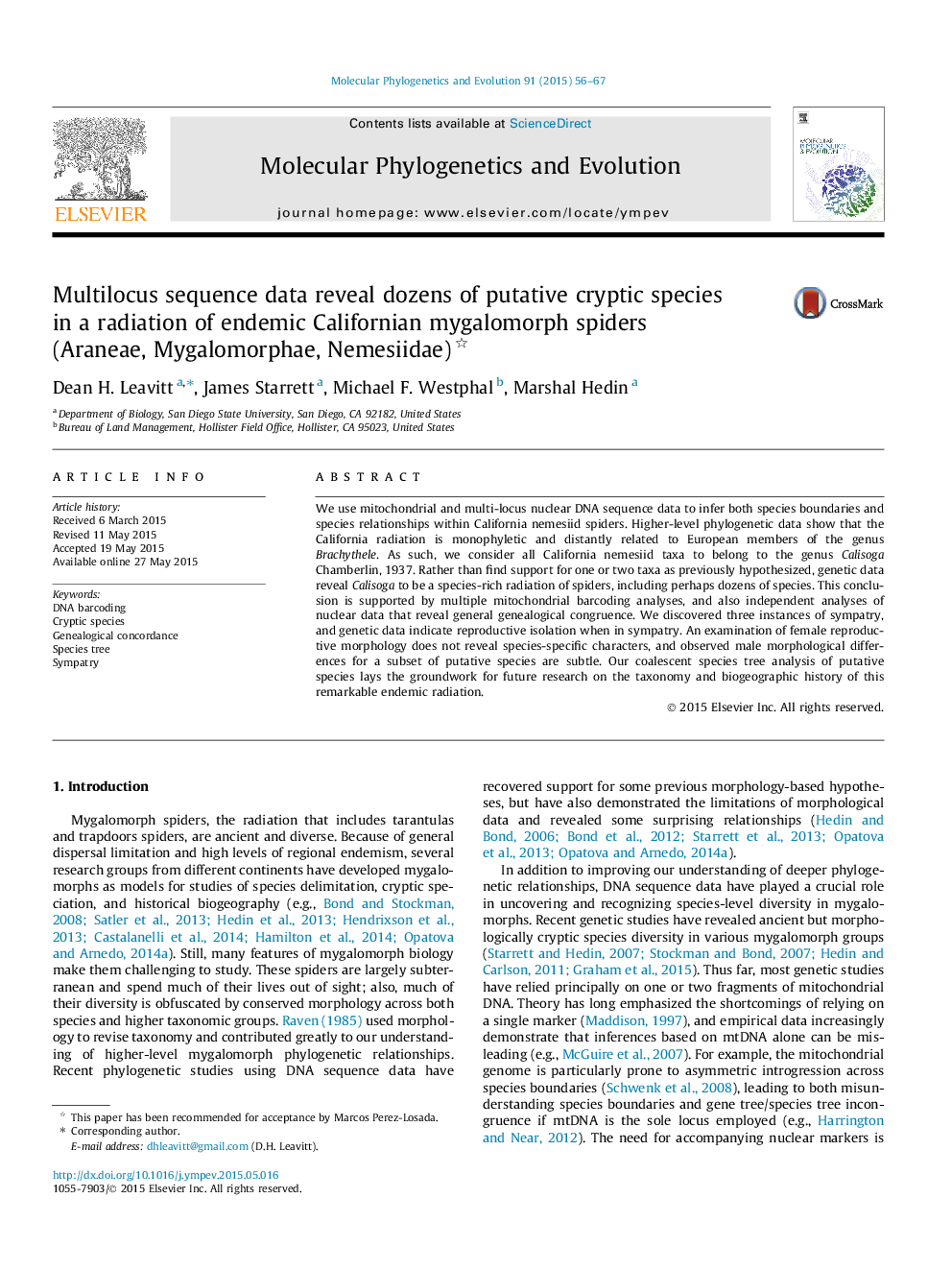| Article ID | Journal | Published Year | Pages | File Type |
|---|---|---|---|---|
| 2833780 | Molecular Phylogenetics and Evolution | 2015 | 12 Pages |
•We examine phylogenetic relationships of Californian representatives of the spider family Nemesiidae.•Results indicate that the Californian radiation is not congeneric with European Brachythele.•Barcoding analyses suggest that the CA radiation contains dozens of putative cryptic species rather than one or two.•A species tree analysis of eight nuclear loci supports mtDNA-identified species.•We found three instances of sympatry, each involving unique species pairs.
We use mitochondrial and multi-locus nuclear DNA sequence data to infer both species boundaries and species relationships within California nemesiid spiders. Higher-level phylogenetic data show that the California radiation is monophyletic and distantly related to European members of the genus Brachythele. As such, we consider all California nemesiid taxa to belong to the genus Calisoga Chamberlin, 1937. Rather than find support for one or two taxa as previously hypothesized, genetic data reveal Calisoga to be a species-rich radiation of spiders, including perhaps dozens of species. This conclusion is supported by multiple mitochondrial barcoding analyses, and also independent analyses of nuclear data that reveal general genealogical congruence. We discovered three instances of sympatry, and genetic data indicate reproductive isolation when in sympatry. An examination of female reproductive morphology does not reveal species-specific characters, and observed male morphological differences for a subset of putative species are subtle. Our coalescent species tree analysis of putative species lays the groundwork for future research on the taxonomy and biogeographic history of this remarkable endemic radiation.
Graphical abstractFigure optionsDownload full-size imageDownload as PowerPoint slide
